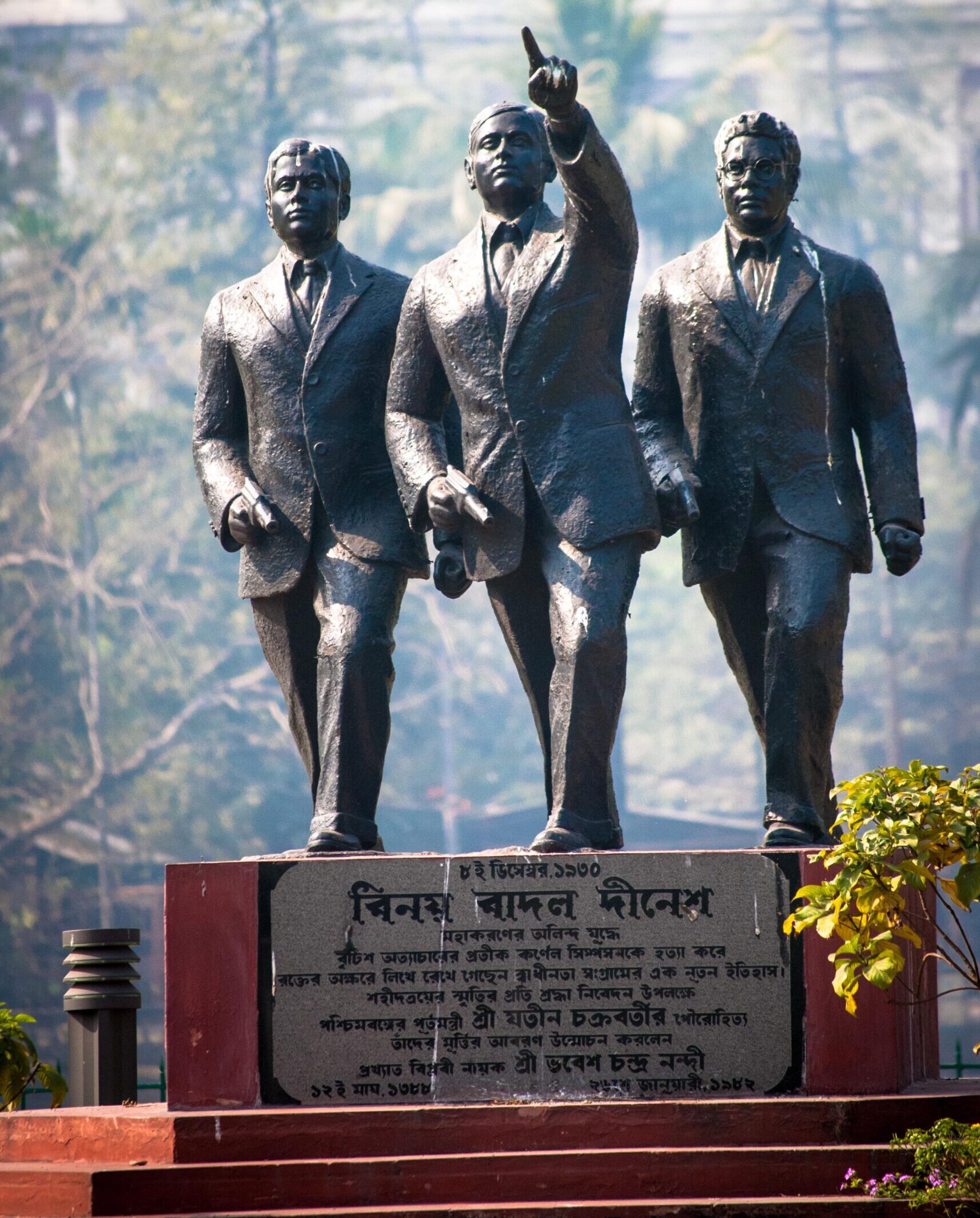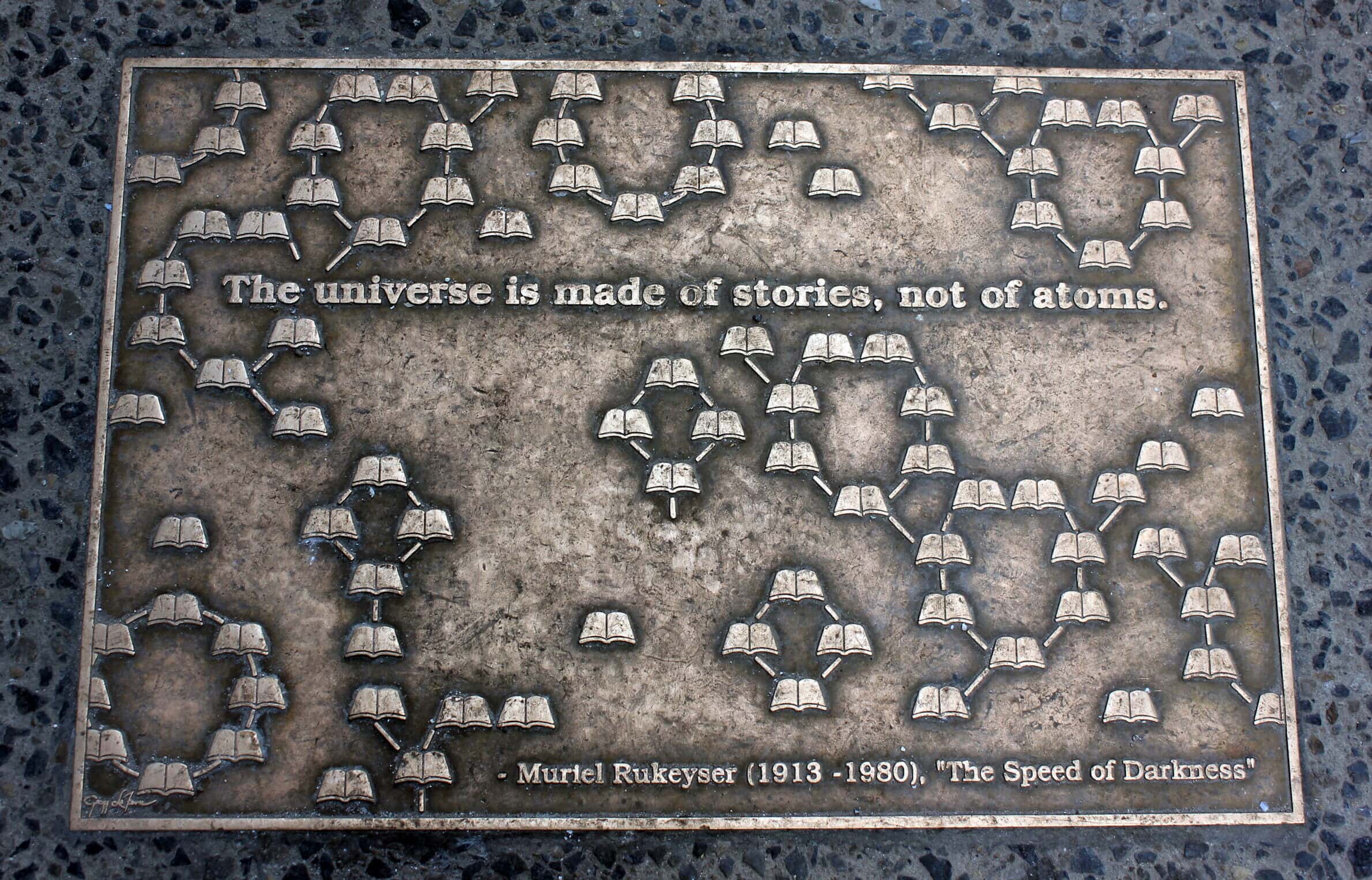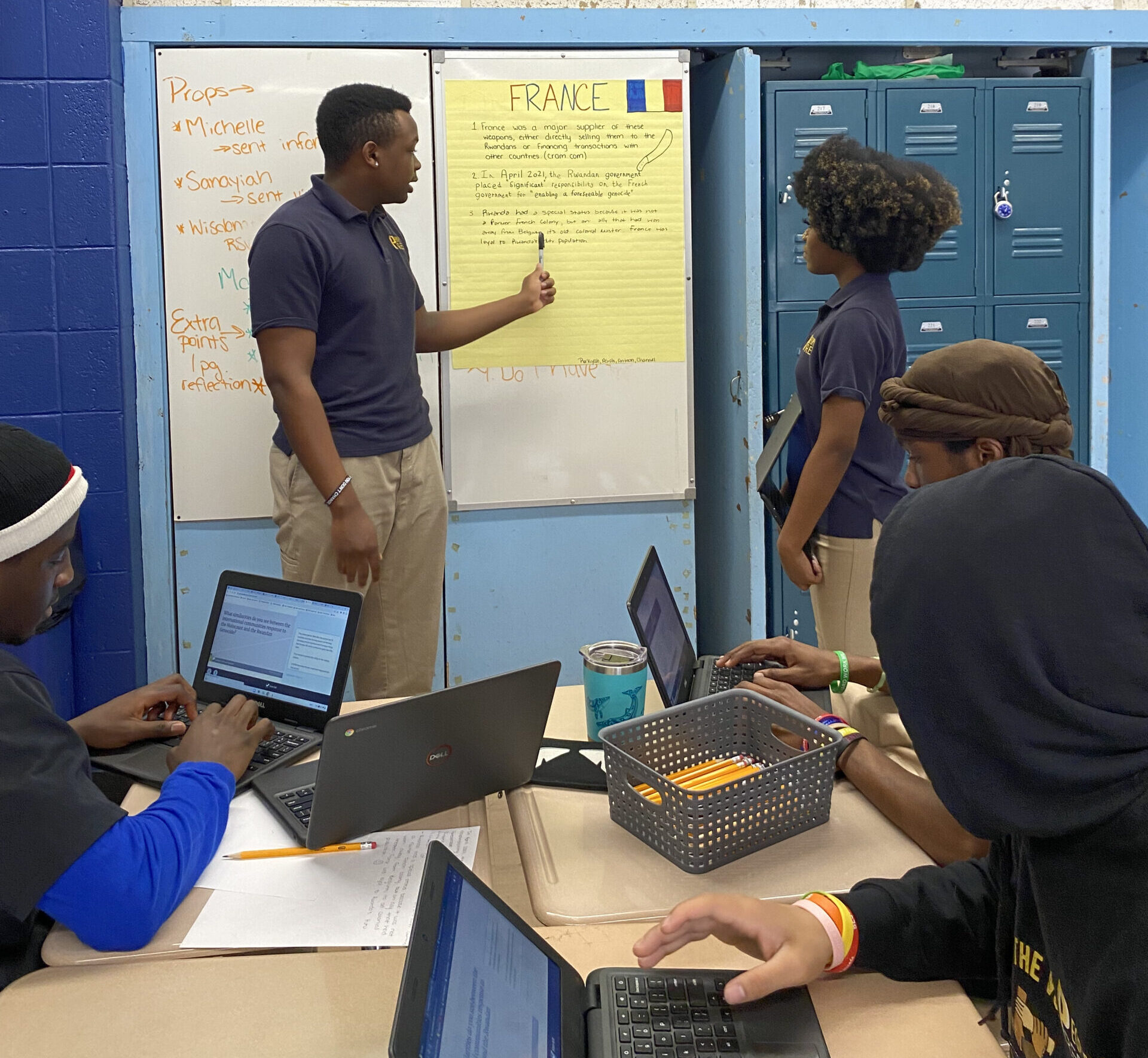In 2007, Teofilo Ruiz, then vice president of the American Historical Association’s Research Division, proposed a project entitled “Sites of Encounter and Cultural Production” to examine the many geographical contexts in which different peoples and cultures meet.1 From the outset, the group wanted to increase the connections between research universities and K–12 schools, and they were joined in this effort by the California History–Social Science Project (CHSSP), an organization with experience in developing relationships between teachers and scholars to support history education. From this dynamic partnership and Ruiz’s call to action emerged two world history institutes for middle and high school teachers, held in southern California during the summers of 2008 and 2009.2 Their impact on K–12 and university classrooms continues. To historian Robert Moeller, a faculty adviser for the CHSSP, these partnerships contribute “to the creation of new forms of civic engagement that affect K–12 students and teachers. But no less important, this work is creating a group of scholar-citizens—faculty members, graduate students, and undergraduates—who are at home in the university and at home in the much broader world that surrounds it.”3 Since 2008, the Sites of Encounter program has been building bridges across K–20 education, encouraging teachers and students to understand the connections in their world, and imparting to students the skills they need to become productive citizens.
K–20 Education: One Big School House
All CHSSP institutes emphasize the relationship between research and pedagogy, with professional development focused on the disciplinary skills necessary to teachers for enhancing their students’ critical thinking. According to Courtney Amaya, a high school history teacher from Orange Unified School District involved in the CHSSP, the focus on collaborative pedagogical strategies, which helped guide the priorities of the Sites of Encounter program, is particularly relevant to history teachers confronting the challenges of this turbulent time in education.4 Both institutes supported teachers by translating current scholarly research and disciplinary knowledge into practical applications to improve K–12 history instruction. Teachers from high-need districts (those that include student populations with especially large numbers of English learners and low-income families) throughout southern California participated in the programs. To specifically target the instructional needs of these teachers, the leadership team focused their planning on curriculum that engaged students in historical inquiry and literacy development.
The question that provided the focus for the 2009 Sites of Encounter institute was, “What do travel narratives reveal about economic, religious, and political encounters in world history?” Through the lens of travel narratives, teachers engaged with historians to experience “doing” history and to better understand the unique opportunities and challenges that arise through this type of pedagogy. In partnership with their colleagues, teachers analyzed primary sources from a variety of genres and developed interpretive questions to pose to their students. For example, teachers analyzed Japanese songs written by women factory workers to illustrate the tensions and disruptions of migration during periods of rapid industrialization. Each day, teachers had time to partner in grade-alike groups to create lessons that included the pedagogical skills they practiced at the institute. Through a shared exploration of the process of historical inquiry, historians and teachers translated this experience into curriculum that would replicate this process in the teachers’ classrooms.
Making Connections across the World History Curriculum
California’s world history teachers confront a daunting set of standards and often lack the training necessary to create connections across disparate content areas. For example, the 6th and 7th grade courses examine the ancient world, the Middle Ages, and the early modern world through a civilizational approach with very little study of the interaction between regions. Without deviating from the chronological and geographic areas addressed in the standards, the Sites of Encounter program integrated current trends in world history research to support teaching convergences across the curriculum. Simon Fellowes, a teacher with extensive experience in meeting the middle school world history standards, reflected on the benefits of the Sites of Encounter institutes: “One of the major ways in which the partnership has impacted my teaching is in the increased awareness of how societies, cultures, and even events connect both across and time and space. I am always looking for these connections in my curriculum development and design lessons that push the students to discover these connections.”
With the theme of travel narratives, the Sites of Encounter summer institute offered teachers an opportunity to make these connections across heterogeneous content. Teachers studied how individuals, groups, and commodities crossed boundaries, and how these interactions affected cross-cultural exchange. Each day they examined a different analytical category that stemmed from cross-cultural interactions. For example, the day spent on religious encounters began with discussion of an article about Christianity in Korea in order to understand the concept of syncretism through religious missions and conversions.5 Teachers then participated in a lecture and discussion examining Buddhist, Christian, and Muslim pilgrimages over time. This faculty-led presentation offered teachers an example of a comparative approach to religion as well as an example of crosscultural interaction. After this presentation, a teacher-leader modeled classroom-tested lessons on Ibn Batuta and the Hajj. In the afternoon, teachers had time to work together to consider how to best implement current historical methodologies into the K–12 classroom.
Promoting Critical Thinking among Future Citizens
The Sites of Encounter program’s emphasis on the interconnectedness of world history appealed explicitly to the demands put upon 21st-century students—that is, to locate their sense of place in the world, to develop critical thinking, and to master academic literacy skills. In an attempt to convey these higher-order skills, California embeds history-social science analysis in its state content standards and requires teaching through comparisons, arguments, and primary sources. But these are challenging methods, as teachers do not regularly undergo training in how to instruct students to read primary sources critically or to develop historical questions and interpretations. In direct response to teacher needs, the Sites of Encounter program emphasized the significance of the history classroom as a site for literacy training and critical thinking. Travel narratives highlighted the interconnectedness of the world as well as the historical thinking skills necessary to develop analysis and interpretation of texts. The institute utilized these firsthand accounts, which are often available in textbooks, to help students develop a deeper understanding of the culture or event under study. Travel narratives provide a unique opportunity for students to analyze the writer’s position and bias—travelogues are often written for an audience “at home” and thus deploy examples to illustrate perceived differences between the foreign culture and the writer’s own. The institute’s emphasis on travel narratives encouraged teachers to consider a specific strategy that would require students to “read against the grain.” The goal was to work with teachers to develop instructional questions that stressed a consideration of point-of-view, allowing students to thoroughly investigate the travel narratives through the study of a specific site of encounter. Upon implementing this instruction in her classroom, a middle-school teacher-participant conveyed these results: “Since the institute I have tried to focus each unit on the skills that make up the California Framework, not just the content standards. I think this has improved my teaching.” The focus on these interpretive skills provided teachers with an opportunity to consider how to better integrate materials to which they have access in a way that supports the rich interpretation and analysis critical to student success.
Upcoming Sites of Encounter Projects
The Sites of Encounter institutes not only provided opportunities for collaboration, but also promoted civic engagement among history educators throughout the discipline. Underpinning every effort was a common thread to support students in gaining the deeper understanding of world history necessary to an engaged citizenry.
The efficacy of these partnerships led the CHSSP Sites of Encounter team to develop annual institutes for southern California teachers. The summer 2012 program will examine world empires as a Site of Encounter. The institute will introduce teachers to current historical research on theoretical frameworks of empire allowing them to make comparisons across time and place. By focusing on empires as sites of encounter, teachers will explore the ways that empires expanded and the responses to this expansion by individuals and groups within the imperial boundaries. The theme of empire is found at each grade level of California world history curriculum (6th, 7th, and 10th grade) and the institute will offer teachers an opportunity to collaborate to develop their own student-friendly definitions of empire that they can utilize in their classrooms. This comparative study of empires will move students beyond a memorization of the accomplishments of each civilization toward a study of the complex political, social, economic, and cultural forces that shaped world history.
< Previous essay | Next essay >
Notes
- Teofilo Ruiz, “Sites of Encounters and Cultural Production”: An AHA Initiative for an Action Thématique,” Perspectives on History, December 2007. [↩]
- The CHSSP Sites of Encounter team is made up of Courtney Amaya, Anthony Arzate, Simon Fellowes, Nicole Gilbertson, Shennan Hutton, Tim Keirn, Kate Merkel-Hess, Robert Moeller, and Dave Neumann. The team benefitted from the support of scholars from UC San Diego, UC Irvine, CSU Long Beach, Long Beach City College, and UC Los Angeles. [↩]
- Robert Moeller, “Building One Big School House: A Community of K–23 Educators?” presented at the 124th Annual Meeting of the American Historical Association, January 2010, in San Diego. The subheading of the next section is taken from the title of this paper. [↩]
- Courtney Amaya, “For the Love of History: Transforming Passion to Good Teaching!” presented at the 124th Annual Meeting of the American Historical Association, January 2010. [↩]
- Donald N. Clark, “Christianity in Modern Korea,” Education about Asia, Fall 2006. [↩]
Nicole Gilbertson is site director of the History Project at the University of California, Irvine.


